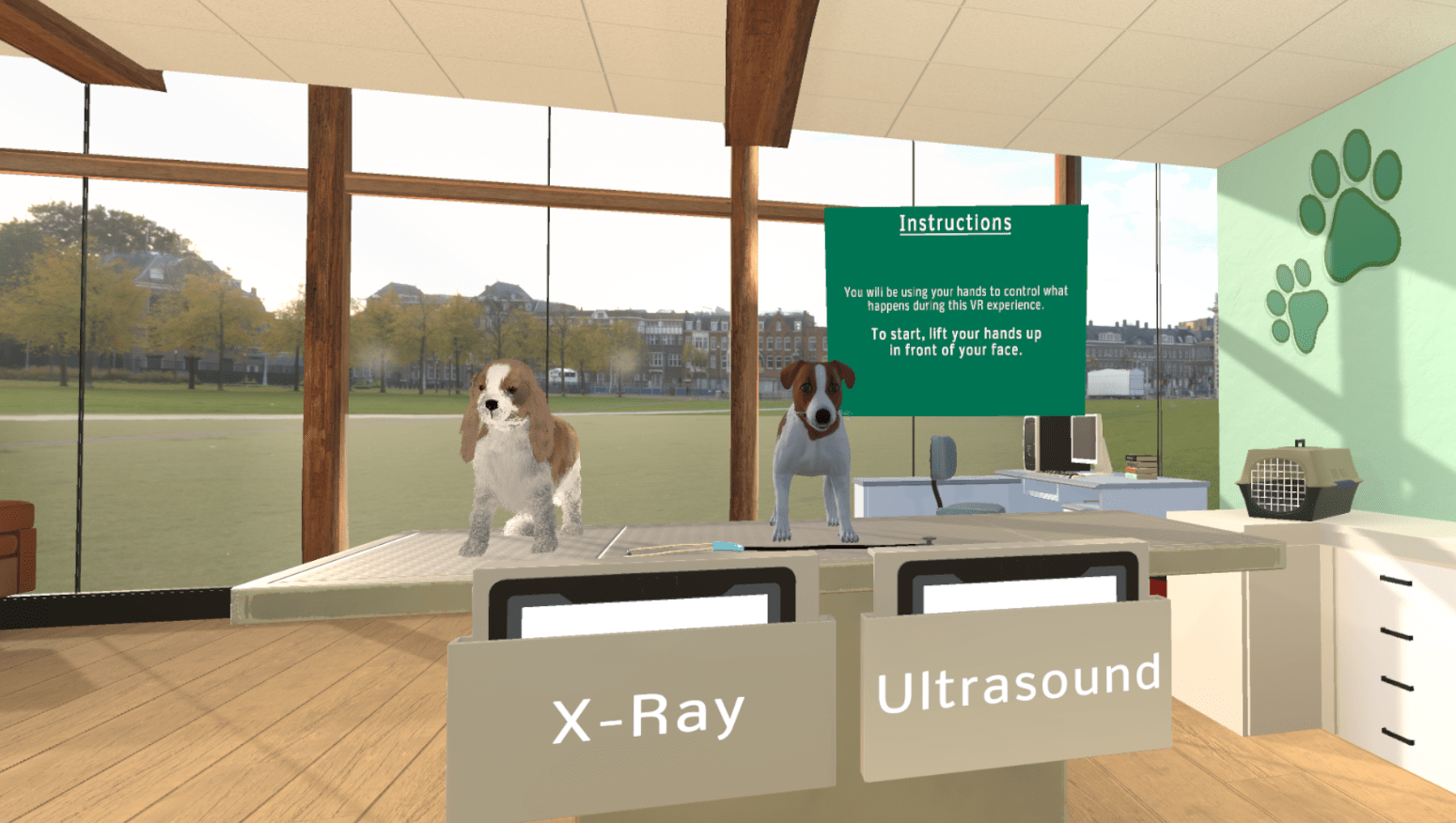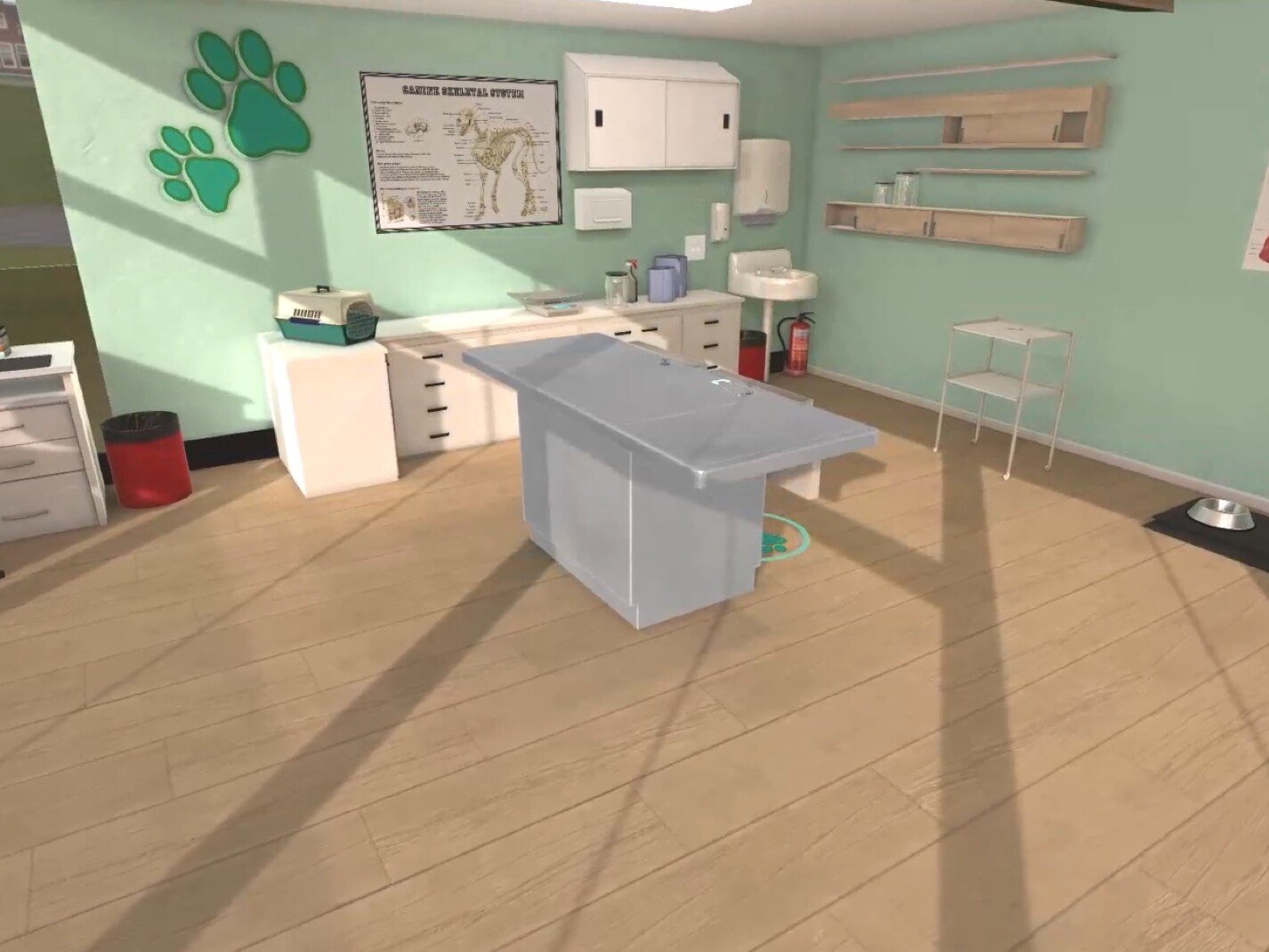Strengths of clinical VR training revealed through immersive canine cardiology
VR veterinary experience
In 2017, we developed a virtual reality simulation that places users in the role of the veterinarian, treating dogs with heart conditions – using our client’s medication. This engaging and educational experience was initially designed as a marketing tool, but also proved useful in demystifying veterinary processes, educating about canine heart murmurs, and demonstrating how innovative treatment methods can be applied in practice.
Partners
We collaborated with a confidential partner in the animal healthcare sector – an organisation dedicated to developing pioneering treatments for pet health. Their aim: to communicate the effectiveness of their latest medication in a format that was accessible, memorable, and impactful for their customers.
Step into a professional role
In order to convey how our client’s product could impact the lives of dogs and their owners, we created an immersive virtual reality simulation where users choose from a range of dog breeds, each predisposed to specific heart murmurs. Once selected, the user steps into the role of vet, diagnosing the condition, exploring contributing factors, and applying our client’s medication to treat their virtual patient. With simplified terminology and interactive elements, the experience transforms complex medical information into a tactile, engaging journey.
Canine heart disease can be a challenging topic to communicate, particularly when it involves technical veterinary jargon. The goal was to create a hands-on, story-driven tool that educates both professionals and the public, improving understanding of the condition and increasing trust in the proposed treatment solution. By recreating canine patients in VR, we engaged users on a deeper, more emotional level.
Beyond innovative marketing
Since 2017, we have been using immersive technology to transform clinical education – including surgical simulations, 3D anatomical overlays, and emergency response procedures. Originally developed as a marketing tool for our animal healthcare clients, our realistic, narrative-driven veterinary experience proved equally valuable in the virtual training arena.
Simulation-based experiences have consistently demonstrated their ability to effectively engage students and create lasting knowledge retention, particularly when the risks associated with real-world practice are removed. In our veterinary VR experience, for example, users can methodically explore treatment options for canine patients without the complications posed by distressed animals. Whilst certain medical training can be conducted with willing human volunteers, veterinary students often work with less predictable patients. VR overcomes these barriers, by providing a repeatable, controlled, and risk-free environment – offering a training experience to supplement traditional methods.
VR for vets and pets
Virtual reality is proving to be a powerful tool in animal healthcare. Our canine cardiology simulation began as a marketing experience – helping the pharmaceutical industry communicate treatment outcomes through personal, lived experiences rather than data alone. By putting users in the shoes of a practitioner, empathy, confidence and product understanding increased dramatically.
Its success in that role revealed a second, equally valuable application: professional training. The same immersive, first-person approach that won over customers also proves ideal for veterinary students. Repurposing the marketing simulation into a training tool allows practitioners’ to strengthen their skills whilst continuing to communicate product value in a way that felt authentic, empathetic, and grounded in real-world veterinary practice.


